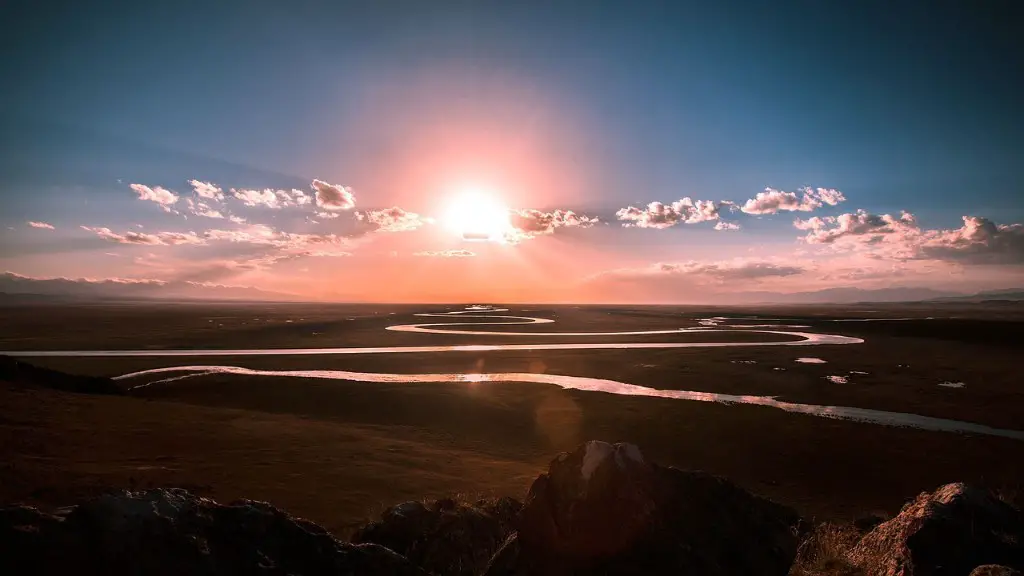The Mississippi River Delta has suffered centuries of decline and the rate of land loss is only becoming more severe. For example, the delta has lost over 50% of its area since the 1930s. This is an issue that impacts coastal communities, the local economy, and environmental health in Louisiana, Mississippi, and Alabama.
The first issue which contributes to the decline of land in the Mississippi River Delta is coastal erosion due to storm surge, ocean waves, and currents eroding the coastline. Louisiana’s coastline is especially vulnerable because of its soft sedimentary structures, and storms often cause rapid shoreline change. In addition, sea level rise resulting from climate change is a major factor accelerating coastal erosion. With more frequent and intense storms, the shoreline is eroding faster each year.
The second factor that is contributing to the decline is the draining and filling of wetland habitat. Louisiana loses more wetland acreage each year than any other state in the US and the Mississippi River Delta has been particularly affected. In addition to the loss due to sea level rise, wetland habitat is being drained and filled to increase the amount of available land for industry, shipping, and urban development. This can cause long-term damage to the ecosystems of the wetlands as drainage affects water levels and salinity, as well as soil compaction from development which can impact plant growth.
The third factor that is leading to a decrease in land in the Mississippi River Delta is subsidence. This occurs when the land is no longer able to support its own weight and, as a result, sinks lower into the ground. Subsidence is caused by a variety of factors including the extraction of groundwater, oil, and natural gas from beneath the surface. As a result, the land turns from marsh to open water, reducing the amount of land that can be used for anything else.
The combined effect of these three factors has resulted in a large amount of land being lost to the delta. This loss of land is not only damaging to the environment and coastal communities, but it also affects the local economy. In Louisiana alone, billions of dollars are lost each year due to the destruction of wetlands. In addition, the destruction of wetlands adversely impacts the local habitat and the wildlife that relies on that habitat.
There are a variety of initiatives in place to help slow the land loss in the Mississippi River Delta, such as buffer zones and wetlands restoration. In addition, various government programs provide funding for projects aimed at restoring wetlands and mitigating coastal erosion. However, these efforts are not enough to address the problem and more must be done to protect the delta’s fragile ecosystem.
Precautions to be Taken
The best way to protect the delta from further destruction is to prevent more from happening in the first place. This means implementing safeguards that protect against coastal erosion, wetland destruction, and subsidence. To this end, Louisiana has adopted various regulatory measures to protect wetlands and ecosystems in the state.
The primary way to protect against coastal erosion and wetland destruction is to reduce human activities that contribute to these issues. This could include reducing the rate of development in at-risk areas, creating buffer zones to protect habitats, and implementing best management practices to reduce the impact of activities such as dredging, mining, and agricultural activities. In addition, limiting physical and chemical alterations to the landscape can be beneficial in preserving ecosystems.
To help mitigate the effects of subsidence, it is necessary to reduce the extraction of natural resources, such as groundwater and fossil fuels, in areas near the delta. This could include establishing regulations on the extraction of these resources, as well as monitoring their use more closely.
In addition to regulatory measures, there are other initiatives that can help protect the delta from further destruction. One of the most effective is the implementation of large-scale restoration projects, such as the Coastal Wetlands Planning, Protection, and Restoration Act (CWPPRA). This program has created thousands of acres of wetlands and buffer zones along the delta.
Scientific Studies
To better understand the magnitude of the problem, researchers have conducted numerous studies on the Mississippi River Delta. One recent study estimated that the delta is losing 5,000 hectares of land each year, with land loss at a rate of 16 square kilometers per years. In addition, the study concluded that the rate of land loss is expected to continue at, or even surpass, this rate over the coming years.
Other studies have looked into the causes of land loss in the delta. For example, one study looked at the effects of leveeing and determined that the building of levees on the Mississippi River has caused a reduction in sediment and nutrient delivery to the delta, leading to a decrease in marsh vegetation and an increase in open water areas.
A variety of experts have also weighed in on the issue, including ecologists, engineers, geographers, and economists. Generally, these experts agree that the land loss in the delta is a problem that should be addressed, and that more must be done to protect the delta from further destruction.
Technologies Being Used
In addition to regulatory measures and restoration projects, new technologies are being used to help protect the Mississippi River Delta. For example, dredging has been used to collect sediment and build up land in certain areas. This is a beneficial process that can help to reduce the rate of land loss. Additionally, topographic mapping, remote sensing, and geospatial analysis can be used to better understand the current state of the delta and how to best protect it.
Another technology that has been used by researchers is Light Detection and Ranging (LiDAR). This is a technique used to measure the elevation of the land in three dimensional detail. Using LiDAR, researchers have been able to accurately measure land loss and make precise maps of the delta, which can be used to develop better strategies for preventing and reversing land loss.
Finally, there are numerous computer models and simulation techniques being used to assess the effects of sea level rise, storm surge, and other factors on the delta. These computer models can be used to predict how the delta will respond to a variety of human actions and natural processes, so that appropriate initiatives can be implemented.
Concerned Groups
Numerous actors and stakeholders in the Mississippi River Delta are concerned about the land loss issue. National and local environmental groups are actively monitoring the situation and advocating for initiatives that can help protect the delta. Residents of coastal communities are voicing their frustrations about the destruction of their habitat, and calling for more action to be taken.
Industry leaders have also begun to take notice of the problem. Companies like Entergy have set up initiatives to help restore wetlands, and have pledged to reduce their contribution to the land loss. Civil engineering firms have created specialized methods for reducing the effects of coastal erosion and other forms of land loss.
Finally, the federal government is involved in the issue, with numerous agencies like NOAA, the Army Corps of Engineers, and the Environmental Protection Agency all working to protect the delta. Programmes funded through the Coastal Wetlands Planning, Protection, and Restoration Act (CWPPRA) have been key in helping to reduce the rate of land loss.
Developing Strategies
In order to effectively address the land loss issue in the delta, strategies must be developed that take into consideration the various factors at play. This includes understanding the cause of the land loss, and finding ways to reduce it. Prevention, restoration, and mitigation all have roles to play, and all involve individuals, organizations, and governments working together to protect the landscape.
Governments should think carefully about policies that can reduce the effects of land loss in the delta. This could involve legislation, regulation, and incentives for activities and investments that protect the delta. At the same time, governments should also consider providing resources for restoration and other initiatives that can help protect the delta.
In addition, Local communities should be supported to adopt initiatives that can help to protect the delta, such as planting vegetation and creating buffer zones. Industry and businesses should also be encouraged to adopt practices, where feasible, that can reduce their contribution to land loss. Finally, citizens should be educated on the issue, and engaged in protection initiatives.
Local Efforts
Local communities are critical to the protection of the Mississippi River Delta. The delta is the home of numerous communities that rely on the ecosystem for their lives and livelihoods. To this end, locals are taking part in initiatives to help with the land loss issue. This includes planting vegetation, creating buffer zones and wetlands, and working to protect habitats.
In addition, there are numerous local organizations actively working to protect the delta. These range from nonprofits dedicated to protecting wetland habitats and wildlife, to universities conducting research on the delta’s ecology and geology. Local communities are also engaging in a range of educational initiatives, such as tours and documentary productions.
The delta is a critical part of the ecology and economy of the southeastern US, and it is important that we do all we can to protect it. Despite the challenges, progress is being made and more needs to be done in order to protect the delta for future generations.





